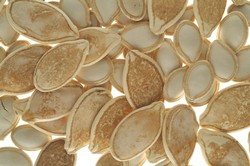Improved detection of seed-borne pathogens
Disease-causing pests and pathogens of crop plants are often carried and spread by plant seed, which is produced, traded and planted across the globe. Regulation and quality control of the plant seed trade relies on sampling and testing seed lots for pests and pathogens, as well as disinfection. The seed lot is a defined quantity of seed that is handled as a single unit and is usually from same field harvested on the same day and cleaned at the same time. The TESTA (Seed health: development of seed treatment methods, evidence for seed transmission and assessment of seed health) project was established to support EU seed-testing laboratories by tracking how pathogens are transmitted by seeds. It also developed new ways to treat infected seeds. Experiments conducted during the project have increased understanding of the mechanisms of seed transmission of pests and diseases. For example, internal contaminations of seeds by pathogenic bacteria were observed following vascular and floral pathways. This indicated that early and late contaminations of crops can lead to internal seed contaminations, which are difficult to remove with seed treatments. An approach using the area under the disease progress curve (AUDPC) is a useful quantitative summary of disease intensity over time for comparison across years, or locations, or management tactics of disease severity. This was used to compare results across field trials from different years and countries and allowed experimental results to be compared between different groups. TESTA developed statistical approaches to accurately sample low pathogen levels in large quantities of seed. To make such testing fast and cost effective, they developed cutting-edge methods to detect several pathogens in one go and without destroying the seed. When seeds are contaminated with one or more pathogens, the entire seed lot may be lost. TESTA therefore tested several non-chemical disinfection techniques for different seed/pathogen combinations, including aerated steam treatment, biocontrol agents and essential oils. By investigating the use of non-destructive methods for testing seed TESTA will enable the industry to save money currently wasted in destroyed seed. TESTA also compiled a comprehensive electronic database of seed-transmitted pests and diseases and tested novel detection and disinfection methods on important crop species. The development of validated and harmonised protocols will provide a valuable resource for regulators, seed producers and inspection laboratories by making seed testing quicker, cheaper and more accurate.







